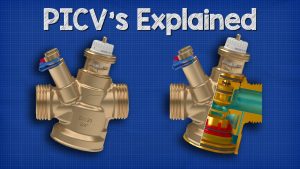Hydraulic balance is an adjustment method for the problem of hydraulic imbalance. The purpose is to eliminate hydraulic imbalance and achieve energy saving.
Theory of hydraulic balance
Hydraulic imbalances are classified into static and dynamic imbalances. The static offset is due to the residual head in some loops, that is, the resistance of some loops is too small, and the actual flow of these loops will exceed the design flow. Since the total flow rate is constant, the other parts will not reach the set flow rate, and there will be uneven heat and cold. In a dynamic system, when the water volume of some loops changes, the pressure distribution of the system changes, which interferes with other loops, causing undue changes of other loops. The principle of hydraulic balance is also to overcome the principle of hydraulic imbalance.
Importance and application of hydraulic balance
The phenomenon of hydraulic imbalance in the heating system is still very serious. The imbalance of water is one of the main reasons for the waste of energy consumption. At the same time, hydraulic balance is a prerequisite for ensuring that other energy-saving measures can be implemented reliably. Therefore, in terms of system energy conservation, hydraulic balance should be achieved first, and the system must be forced to achieve hydraulic balance.
Solution of hydraulic balance:
Balance valve
In response to the above situation, a hydraulic balancing valve is used in the heating system to solve the problems of dynamic and static imbalance. The balancing valve is a special function valve with good flow regulation. The relative flow rate is approximately linear with the relative opening degree, and has the characteristics of accurate valve opening indication.
Solution of hydraulic balance
: mixed water balance unit
The water pump balancing unit (manenergy) was used instead of the previous regulating valve to change the single pump of the original heat source to the distributed multistage pump. The water mixing balance unit takes water from the hot water pipe network according to the actual heat demand of the building, and automatically adjusts according to the actual load at the end. The hydraulic balance is well solved, and the circuits are independently cycled, eliminating the mutual influence during the adjustment process.












